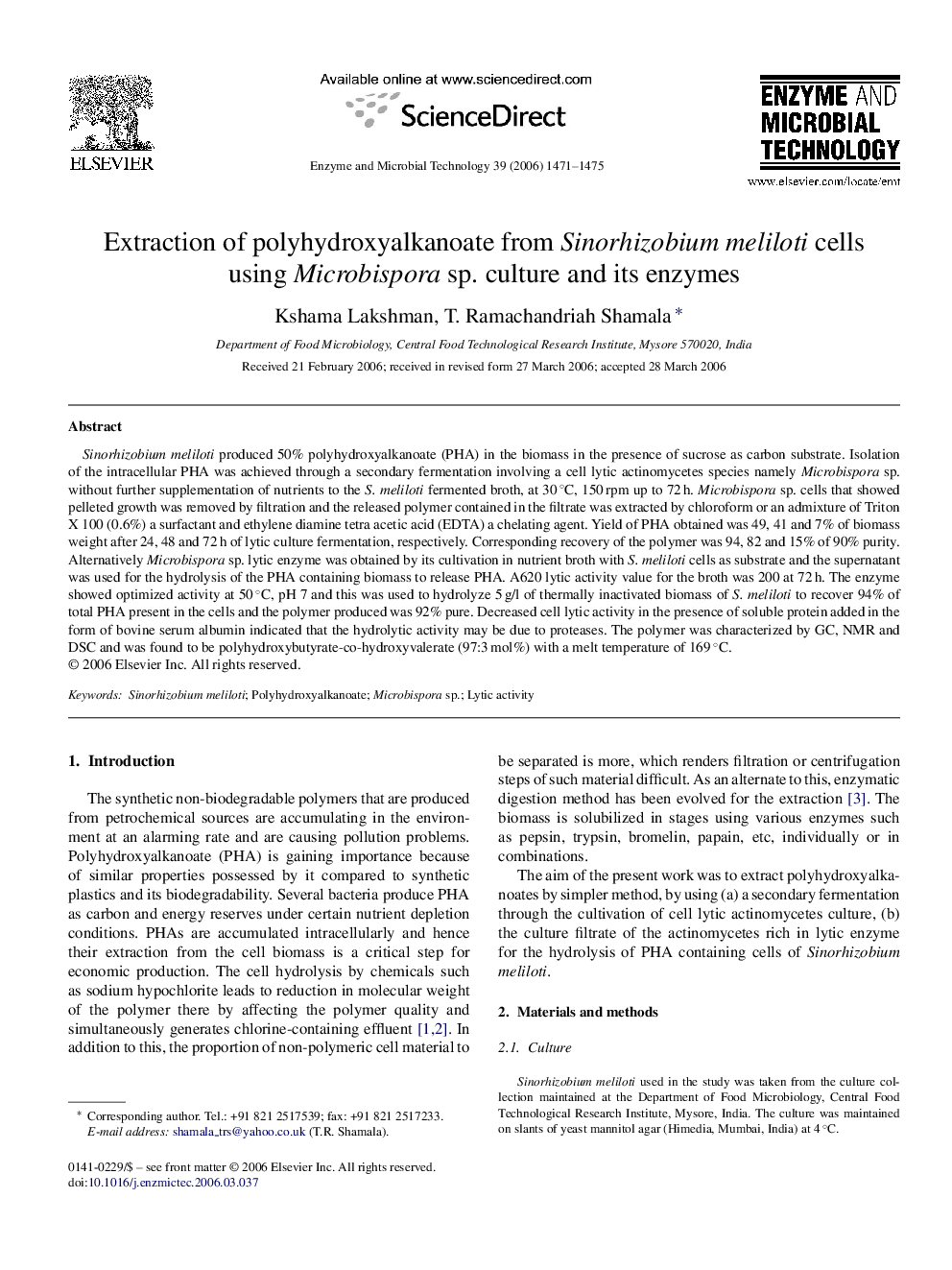| کد مقاله | کد نشریه | سال انتشار | مقاله انگلیسی | نسخه تمام متن |
|---|---|---|---|---|
| 18471 | 42724 | 2006 | 5 صفحه PDF | دانلود رایگان |

Sinorhizobium meliloti produced 50% polyhydroxyalkanoate (PHA) in the biomass in the presence of sucrose as carbon substrate. Isolation of the intracellular PHA was achieved through a secondary fermentation involving a cell lytic actinomycetes species namely Microbispora sp. without further supplementation of nutrients to the S. meliloti fermented broth, at 30 °C, 150 rpm up to 72 h. Microbispora sp. cells that showed pelleted growth was removed by filtration and the released polymer contained in the filtrate was extracted by chloroform or an admixture of Triton X 100 (0.6%) a surfactant and ethylene diamine tetra acetic acid (EDTA) a chelating agent. Yield of PHA obtained was 49, 41 and 7% of biomass weight after 24, 48 and 72 h of lytic culture fermentation, respectively. Corresponding recovery of the polymer was 94, 82 and 15% of 90% purity. Alternatively Microbispora sp. lytic enzyme was obtained by its cultivation in nutrient broth with S. meliloti cells as substrate and the supernatant was used for the hydrolysis of the PHA containing biomass to release PHA. A620 lytic activity value for the broth was 200 at 72 h. The enzyme showed optimized activity at 50 °C, pH 7 and this was used to hydrolyze 5 g/l of thermally inactivated biomass of S. meliloti to recover 94% of total PHA present in the cells and the polymer produced was 92% pure. Decreased cell lytic activity in the presence of soluble protein added in the form of bovine serum albumin indicated that the hydrolytic activity may be due to proteases. The polymer was characterized by GC, NMR and DSC and was found to be polyhydroxybutyrate-co-hydroxyvalerate (97:3 mol%) with a melt temperature of 169 °C.
Journal: Enzyme and Microbial Technology - Volume 39, Issue 7, 3 November 2006, Pages 1471–1475